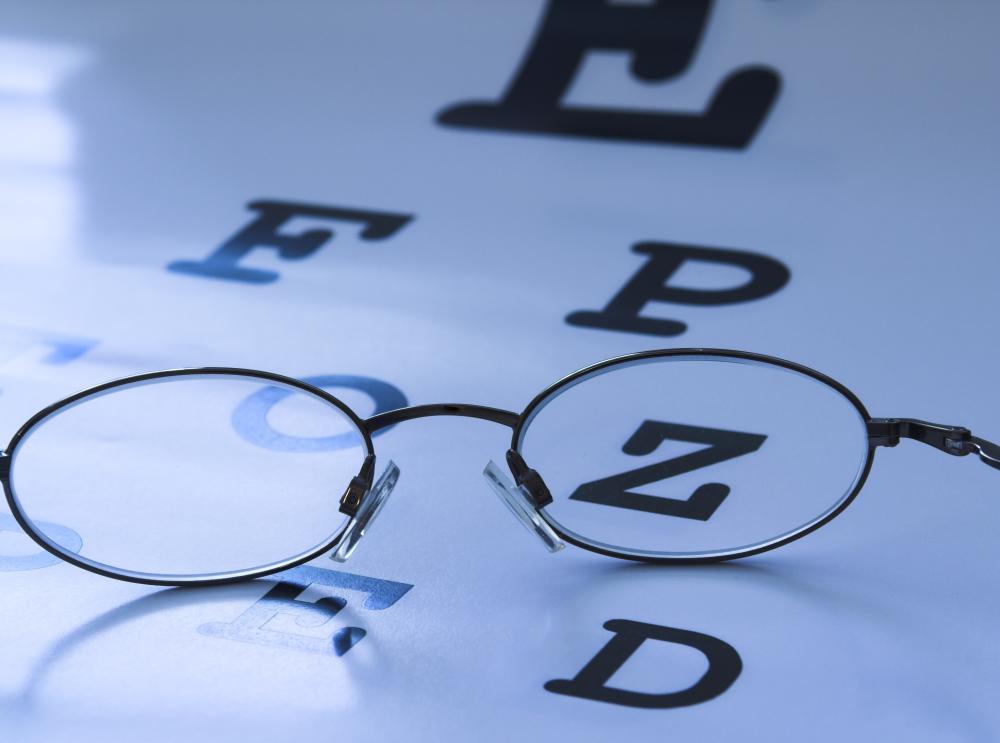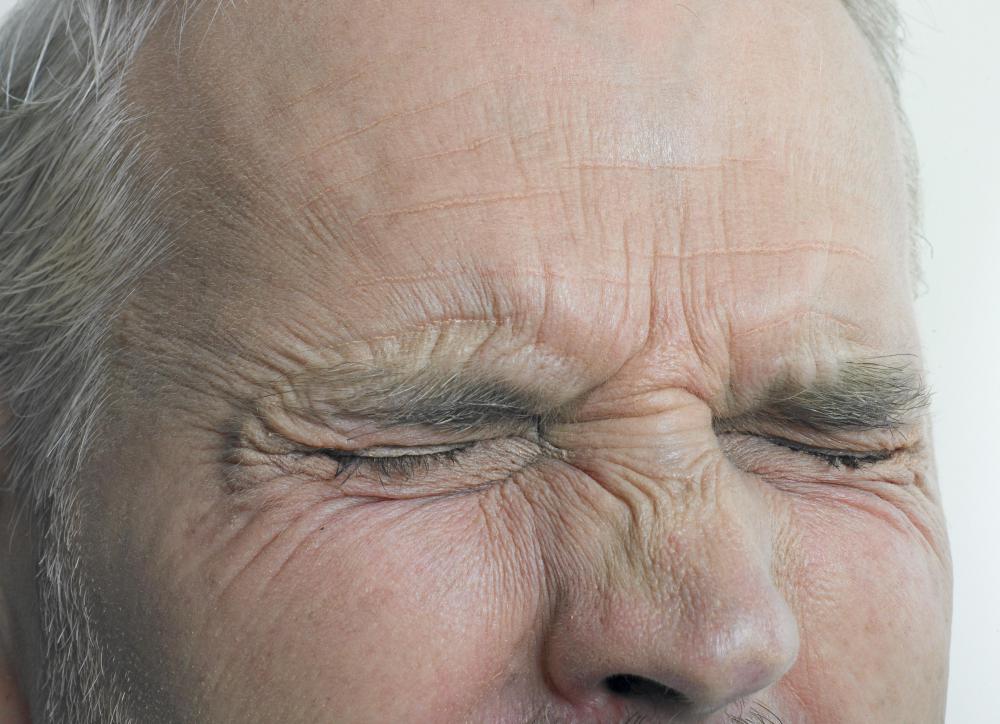At TheHealthBoard, we're committed to delivering accurate, trustworthy information. Our expert-authored content is rigorously fact-checked and sourced from credible authorities. Discover how we uphold the highest standards in providing you with reliable knowledge.
What is Corneal Scarring?
Corneal scarring refers to an injury of the cornea of the eye that causes opacity and visual impairment. The effects of corneal scarring can vary from blurring to blindness in the eye. Scarring of the cornea can be caused by a number of different things and treatment may depend on an individual’s situation. If the scarring is causing significant visual problems, then a corneal transplant may be required to restore vision.
The cornea is the part of the eye that is transparent to let light into the inner eye. There are two parts of the eye which focus light through refraction — the cornea and the lens. The cornea provides the majority of the focusing capabilities of the eye and is highly important for vision. A scratched cornea will block a certain amount of light depending on the severity of the scratch.

Some of the possible causes of corneal scarring include abrasion and burns. If the cornea has suffered surface abrasion, then this usually is not a permanent problem, although there will be some opacity until the eye injury has healed. Burns, on the other hand, may leave permanent scarring depending on the depth of the burn.
One possible cause of corneal scarring is disease. Often this happens when a disease creates an inflammation in the eye and the body tries to heal by increasing the number of blood vessels in the cornea. Some of the diseases that could potentially cause scarring include keratitis and herpes. The long-term outlook for corneal scarring caused by disease varies depending on the individual and type of disease.

In certain cases, corneal healing cannot take place naturally and the scarring is permanent. When this happens, a decision has to be made as to whether the patient requires surgery. This decision will depend on whether the individual's vision is impaired enough to inhibit daily activities.
A common form of surgery for corneal scarring is a corneal transplant. This procedure removes the scarred cornea and replaces it with a healthy one from a donor. Success of the operation depends on whether the correct donor with a suitable match can be found. The outlook for patients that undergo a corneal transplant is generally good, although in some cases the new corneal tissue may be rejected. If this happens, the patient could then have symptoms such as pain in the eye, blurred vision, and an increased light sensitivity.
AS FEATURED ON:
AS FEATURED ON:

















Discussion Comments
I have a scar on my right eye that is visible, including 6 scars that are not visible, I came down with an eye infection when was a teenager. I am now 60 and still have good vision. I use photo grays to keep sunlight off my eyes.
Yes, I do get tightness in the right eye where the scar is. When it gets cold is when it hurts. The scar has grown some. The best you can do is see your doctor. My doctor cuts the eye lenses on my eye to reduce the chance of another infection. I hope this helps.
I have been told by my eye doctor that I have a scar on my eyeball because I had shingles and the virus entered in my eye. He thinks it is not harmful, but I am worried because he said the scar will stay there forever. Anybody had this problem before?
I had a self sealing iris incarceration wound. It healed. I had post lasik treated in my both eyes. I now have scarring which is blocking my peripheral vision. What can be done? Is it permanent? Can the scar go away naturally? Or else, is there any treatment available? Please anyone answer.
I too, had an eye infection (viral conjuntivitis) and had developed corneal scars in both eyes, and have been prescribed steroids. I wonder how effective that would be.
I suffered an abrasion to my cornea last year which seemed to heal and then recurred several times. Finally at Christmas it recurred, except this time seemed much more severe. It turned out my abrasion had become infected and then deepened and spread, leading to an infected ulcer or keratitis.
When I was admitted to hospital I was put on strong antibiotic drops,Vancomycin and Cef every hour for several days. Upon my release I continued to use these in decreasing doses.
I now have a corneal scar. Its symptoms include some blurring, floaters in my vision, dry eyes, red eyes and a strange tightness or stiffness in the eye which I assume is due to tightening of corneal tissue around scar? Can anyone shed light on this? Am I correct? Worryingly, my other eye is now not as focused as it was. Is this eye strain?
I have a cornea scar and I want to know what are the foods (vegetables and fruits) that could help it heal? Please, please, please someone help me. I'm only 23 years old and I don't want to suffer blindness.
While eye surgery – especially for corneal scarring – seems relatively minor compared to other surgeries, I would issue a word of caution to those who dismiss the possibility of corneal scarring occurring to them. Corneal scarring can occur whenever an infection begins in your eye – including the most commonly referred-to eye disease: pink eye.
In order to prevent bacteria and viruses from entering your eyes, and possibly causing corneal scarring, you should always limit your physical contact with people who have infectious diseases as well as avoid sharing eye makeup, contact or lens solution, and eye drops with people who are infected (and in general, just avoid it – you never know what someone else’s germs are up to).
The key to preserving your vision is prevention.
Post your comments